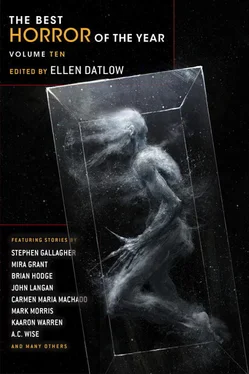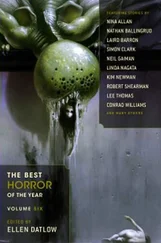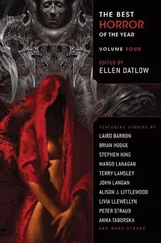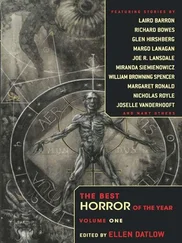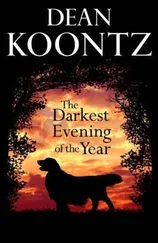Каарон Уоррен - The Best Horror of the Year Volume Ten
Здесь есть возможность читать онлайн «Каарон Уоррен - The Best Horror of the Year Volume Ten» весь текст электронной книги совершенно бесплатно (целиком полную версию без сокращений). В некоторых случаях можно слушать аудио, скачать через торрент в формате fb2 и присутствует краткое содержание. Город: New York, Год выпуска: 2018, ISBN: 2018, Издательство: Night Shade Books, Жанр: Ужасы и Мистика, на английском языке. Описание произведения, (предисловие) а так же отзывы посетителей доступны на портале библиотеки ЛибКат.
- Название:The Best Horror of the Year Volume Ten
- Автор:
- Издательство:Night Shade Books
- Жанр:
- Год:2018
- Город:New York
- ISBN:978-1-5107-1667-4
- Рейтинг книги:4 / 5. Голосов: 1
-
Избранное:Добавить в избранное
- Отзывы:
-
Ваша оценка:
- 80
- 1
- 2
- 3
- 4
- 5
The Best Horror of the Year Volume Ten: краткое содержание, описание и аннотация
Предлагаем к чтению аннотацию, описание, краткое содержание или предисловие (зависит от того, что написал сам автор книги «The Best Horror of the Year Volume Ten»). Если вы не нашли необходимую информацию о книге — напишите в комментариях, мы постараемся отыскать её.
The Best Horror of the Year Volume Ten — читать онлайн бесплатно полную книгу (весь текст) целиком
Ниже представлен текст книги, разбитый по страницам. Система сохранения места последней прочитанной страницы, позволяет с удобством читать онлайн бесплатно книгу «The Best Horror of the Year Volume Ten», без необходимости каждый раз заново искать на чём Вы остановились. Поставьте закладку, и сможете в любой момент перейти на страницу, на которой закончили чтение.
Интервал:
Закладка:
“Enter me. Through five years of busting my ass, I had convinced Larry that I could and should be trusted with a camera and a small crew. We were searching for the right project. I read a lot of scripts; nothing clicked. I tried writing a couple of screenplays, myself, but they weren’t any better. Then one night, I’m talking to Isabelle on the phone. We spoke every couple of weeks, caught up on what each of us was doing. She’d been telling me about the woman in the mine forever, since undergrad. I must have heard the story a thousand times. This particular night, the thousand and first time, things fell into place, and I realized I had my movie right in front of me. I would take Isabelle’s research project, and I would put it onscreen. I would make a documentary about the woman from the mine, about the whole weird thing. Isabelle had assembled a huge archive. There were audio interviews with twenty people. There were hundreds of photographs. There were maps. There were police reports, train schedules, articles about mining. Before I even started, I figured I had a good portion of what I needed for my movie. Production costs would be relatively low, which is never a bad thing for a beginning filmmaker. Sure, a documentary wasn’t exactly the most exciting debut, but I planned to jazz it up by filming an excursion to the mine. We’d take a look around inside, see if we couldn’t find the drawing Isabelle’s uncle had described. If we did—or better, if we located the straightjacket—it would give the film an added umph .
“Isabelle didn’t need much convincing. She saw the documentary as a middle finger to her professor, a way of demonstrating exactly how wrong the woman was. I doubted it would matter to her; her head sounded as if it was pretty tightly wedged up her own ass. But the idea led Isabelle to sign on with me, so I didn’t argue.”
“Hold on,” Edie says, “hold on. Did you make this? Are you telling me Lost in the Dark is a documentary?”
“No,” Sarah says, “no, it’s—it’s more complicated than that.” For the first time in the interview, she is flustered. Both Kristi and Ben appear to be barely containing the impulse to bolt. “We went to the mine—this was after Isabelle and I had put together a rough introduction, twenty minutes laying out the story of the mysterious woman. Her Uncle Rich was retired in Tampa, but we interviewed him via phone and he repeated everything he’d told Isabelle. I had arranged for a professor from SUNY Huguenot who specialized in folklore to sit down for a conversation with Isabelle about the woman.
“First, though, I wanted to shoot our trip. I planned it for Halloween, because how could I not? That was when everything had started, when kids built their bonfires outside the entrance, when Rich had ventured into its tunnels. I had my crew: Kristi on camera, George Maltmore on sound, a couple of film students who’d agreed to do whatever we needed them to. The barest of bones. And Isabelle, who was our guide. I gave George and Isabelle handheld cameras and Priya and Chad a camera to split between them. I wasn’t expecting anyone to catch anything remarkable; I liked the idea of having shots from other perspectives.
“At dusk on Halloween, we entered the mine. I was certain we’d run into kids partying there. In fact, I was counting on it. I wanted it as an illustration of an annual event, a local ritual. But there was no one there. As far as setbacks go, it wasn’t bad. After filming the mine’s exterior, we walked into it.”
Edie waits a beat, then says, “And…?”
“And we came out again,” Sarah says. “Eventually.”
A synopsis of Lost in the Dark is simple enough: an academic leads a film crew into an abandoned mine in search of a mysterious woman who disappeared there decades ago. While in the mine, the crew is plagued by strange and frightening incidents, culminating in a confrontation with the missing woman, who is revealed to be a supernatural creature. After she brutally murders most of the crew, the others flee deeper into the mine. The movie ends with the survivors proceeding into the dark, pursued by the woman.
The devil lives in the details, though, doesn’t he? After all, you could make a terrible film from such a plot. There are three scenes, I think, on which the movie’s success depends. It seems to me a good idea to pause here a moment and consider them. The IMDb listing for Lost in the Dark features what has to be one of the most thorough descriptions of any film listed on the site. At twenty-three thousand words, it’s clearly a labor of love. In the interest of not re-inventing the wheel, I’d like to quote its summaries of the scenes I’m interested in. This is how the movie begins:
Synopsis of Lost in the Dark (2006)
The content of this page was created directly by users and has not been screened or verified by IMDb staff.
Warning! This synopsis may contain spoilers.
See plot summary for non-spoiler summarized description.
Professor Isabelle Price (Isabelle Router) is being interviewed in her office. Thirty-five years ago, she says, on Halloween night, a woman was brought by train from Hoboken, New Jersey, to a spot north of the upstate New York town of Huguenot. As she speaks, the screen cuts to a shot of 1960s-era passenger train speeding across farmland, then back to her. The woman’s name, she says, was Agatha Merryweather. The screen shows a graduation-style portrait of a young woman with dark eyes and long black hair. The image switches to a large blue and white two-storey house. In a voiceover, the professor says that for the previous four years, Angela Merryweather had been confined to the basement of her parents’ home in Weehawken, New Jersey. During that time, neighbors reported frequent shouts, screams, and crashes coming from the house. The photograph of the house is replaced by one of police reports fanned out over a desktop. The Weehawken police, the voiceover continues, responded to one hundred and eight separate noise complaints; although only at the very end did they actually enter the house. The camera zeroes in on the report on top of the pile. When the Merryweathers opened the front door to their house, Professor Price says, the police saw the living room in shambles, furniture upended, lamps smashed, a bookcase tipped over. They also saw Agatha Merryweather, age twenty-one, crouched in one corner of the living room, wearing a filthy nightdress. The screen shows a photograph of a middle-aged man and woman, him in a brown suit, her in a green dress. Agatha’s parents, the voiceover says, assured the officers that things were not as they appeared. Their daughter was not well, and every now and again, she had fits. The police thought the couple was acting strangely, so they entered the house. One of them approached the girl. The screen shows an open door, its interior dark. The other officer, Professor Price says, was drawn to the door to the basement. As the camera focuses on the darkness within the doorway, she says, He noticed that the door had been bolted and padlocked, but that the bolt and the lock had been torn loose when the door was thrown open, apparently with great force. There were no working lights in the basement, but the officer had his flashlight. He went downstairs, and discovered a bare, empty space, with a pile of blankets for a bed and a pair of buckets for a toilet. The walls were covered in writing, row after row of crosses, six-pointed stars, crescent moons, other symbols the cop didn’t recognize. The smell was terrible.
The screen returns to Professor Price, sitting at her desk. From behind the camera, the interviewer (Gillian Bernheimer) asks what happened next. The answer to that question, the professor says, is very interesting. While the police were going about their business, Mrs. Merryweather was on the phone. As you can imagine, the officers were certain they had stumbled onto a case of child abuse. Before they had finished questioning Mr. Merryweather, a black car pulled up in front of the house. Out steps Harrison Law, the Archbishop of Newark, with a couple of assistants. The film shifts to a clip of a heavyset man wearing a bishop’s mitre and robes and holding a bishop’s crozier, greeting a crowd outside a church. The officers were surprised, the professor says, and even more surprised by what the Archbishop said to them: This woman is under the care of the Church. She is suffering from a terrible spiritual affliction, and her parents are working with me to see that she returns to health.
Читать дальшеИнтервал:
Закладка:
Похожие книги на «The Best Horror of the Year Volume Ten»
Представляем Вашему вниманию похожие книги на «The Best Horror of the Year Volume Ten» списком для выбора. Мы отобрали схожую по названию и смыслу литературу в надежде предоставить читателям больше вариантов отыскать новые, интересные, ещё непрочитанные произведения.
Обсуждение, отзывы о книге «The Best Horror of the Year Volume Ten» и просто собственные мнения читателей. Оставьте ваши комментарии, напишите, что Вы думаете о произведении, его смысле или главных героях. Укажите что конкретно понравилось, а что нет, и почему Вы так считаете.
